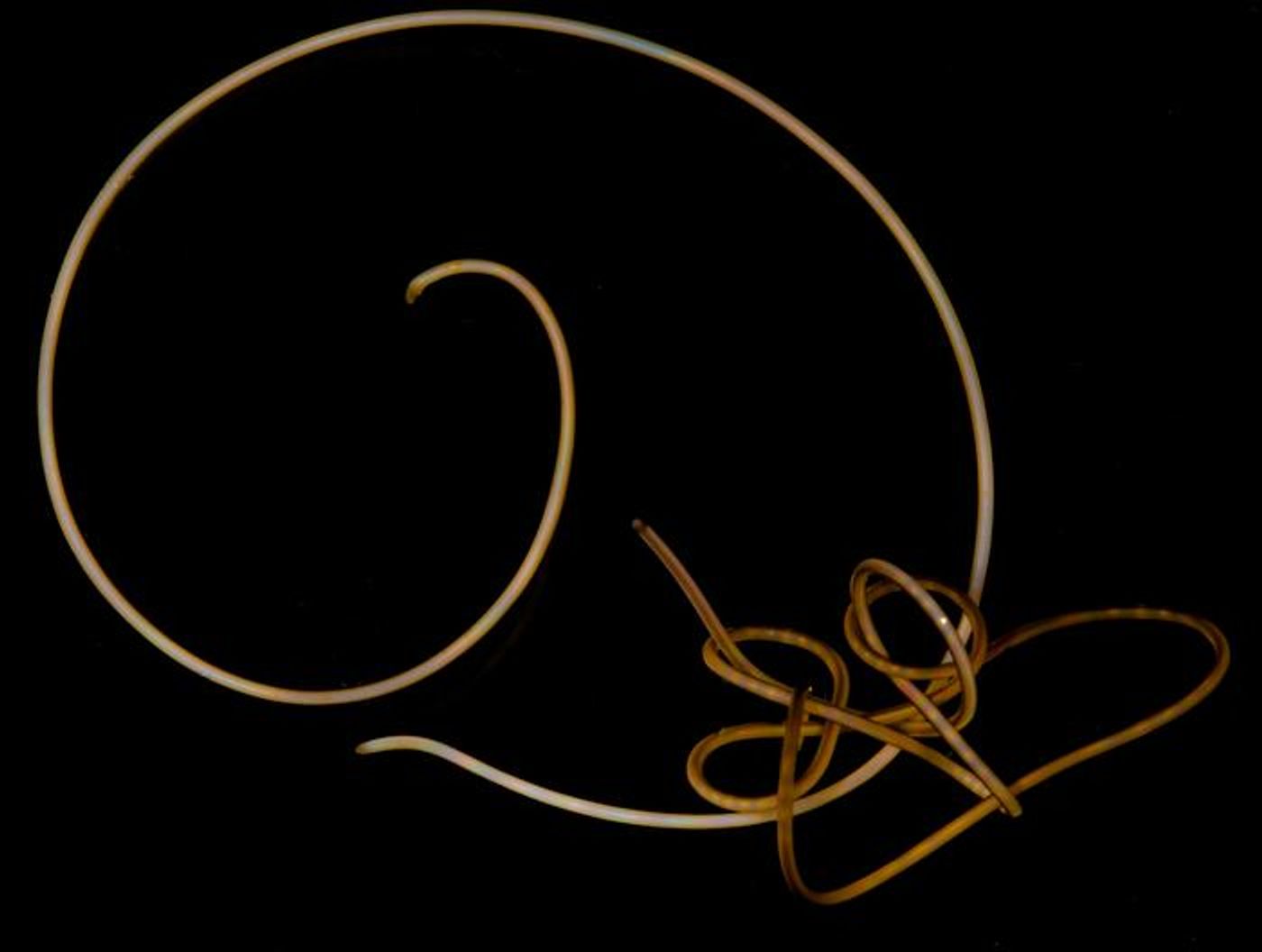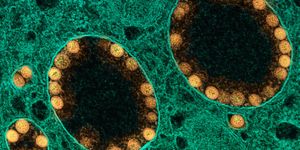Some Mind-Control Parasites Lack Genes That Other Animals Always Have
When a parasite infects a host, it can manipulate host behavior, which may help spread the parasite to new hosts, or enable the parasite to complete its life cycle. Parasitic worms known as hairworms can alter their host's behavior, and are sometimes credited with exerting mind control. Researchers have now found that various species of hairworms lack roughly 30 percent of a set of genes that animals typically have, and these genes are responsible for the formation of antenna-like signaling structures called cilia that are found on the vast majority of cell types. The finding have been reported in Current Biology.
"One of the coolest things, maybe the thing that [hairworms] are most known for, is that they can affect the behavior of their hosts and make them do things that they wouldn't do otherwise," noted lead study author Tauana Cunha, a postdoctoral researcher at the Field Museum in Chicago.
Hairworms are thin, cylindrical animals that are a few inches long. They do not have circulatory, excretory, or respiratory, systems, and usually live within a host animal. Hairworm eggs hatch in water, and the larvae are consumed by animals like mayflies, which are then eaten by larger predators such as crickets. Hairworms can make their host jump into water, where the worms swim from their rectums to go find a mate and begin the hairworm life cycle again.
In this work, the researchers wanted to sequence the hairworm genome to learn more about evolutionary relationships, said Cunha. The team sequenced the genomes of a freshwater and saltwater hairworm.
After comparing the genomes of these hairworms to other animals, the researchers found that they didn't have about 30 percent of the genes in a set that are found in basically all animals, said Cunha. Although this could have indicated an experimental problem, the investigators also found that the missing genes were the exact same in both hairworm species. "This was just implausible by chance," said Cunha.
The genes that are absent were found to be related to cilia, and these structures are found in animals and organisms like plants and fungi. While scientists have not observed cilia on hairworms before, this shows that they actually lack the genes that are needed to make them. Because both species did not have these genes, it seems they were lost in the common ancestor to these two species.
What is still unknown is how the lack of cilia is affecting hairworms. Other parasitic organisms have these genes, so they are not necessarily gone because the worms are parasites, noted Cunha. "But parasitic organisms in general are often missing lots of genes. It's hypothesized that because parasites are not using certain structures and instead rely on their hosts, they end up losing those structures."
Sources: Field Museum, Current Biology









